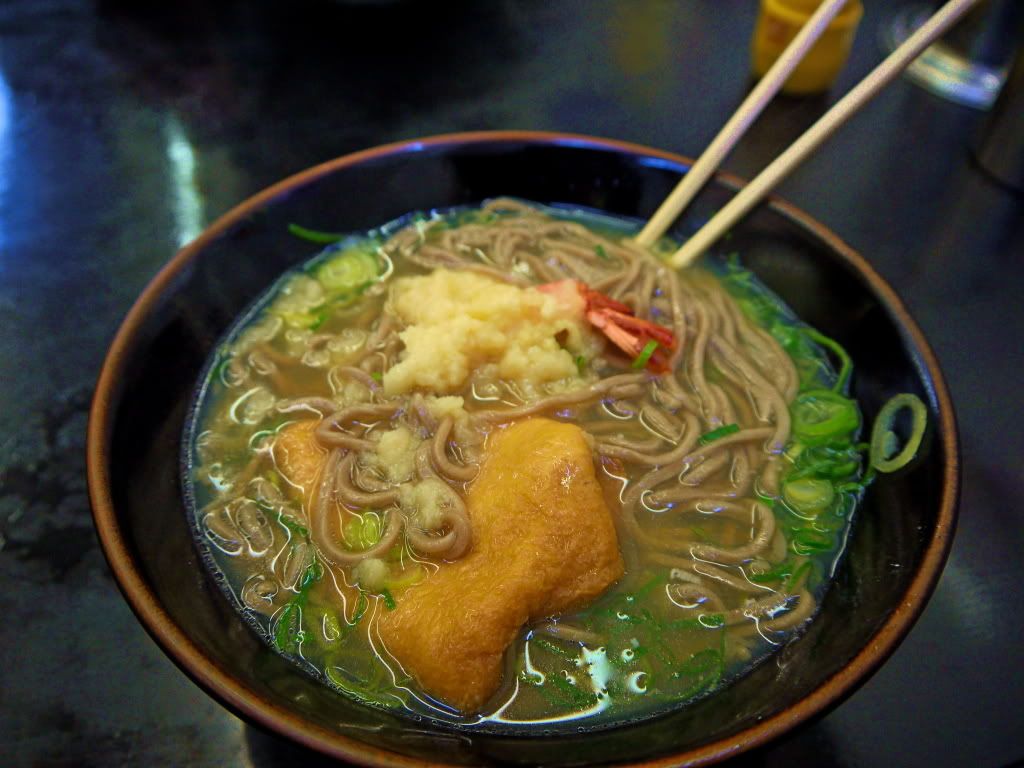 I'm back at the hostel, and what a day it has been. I started off early at the train station to meet DW. Unfortunately, it was the wrong station. After about a half an hour of waiting for him to arrive, I decided to borrow a phone and call. Another first: total rejection on the phone borrowing. The girl didn't even say, "Oh, sorry. I don't have one..." She just gave me a blank stare and then made an 'X' with her arms.
I'm back at the hostel, and what a day it has been. I started off early at the train station to meet DW. Unfortunately, it was the wrong station. After about a half an hour of waiting for him to arrive, I decided to borrow a phone and call. Another first: total rejection on the phone borrowing. The girl didn't even say, "Oh, sorry. I don't have one..." She just gave me a blank stare and then made an 'X' with her arms.Luckily, pay phones are super cheap. This one cost a penny for 30 seconds, which is plenty of time to locate DW and coordinate our meeting. We're soon together and on our way to food. First up on the menu? Noodles. We keep it simple with two Japanese classics: udon, the thick noodles that came with okonomiyaki yesterday, and soba, a thinner buckwheat-based noodles. Both were satisfying and delicious, especially for the price.
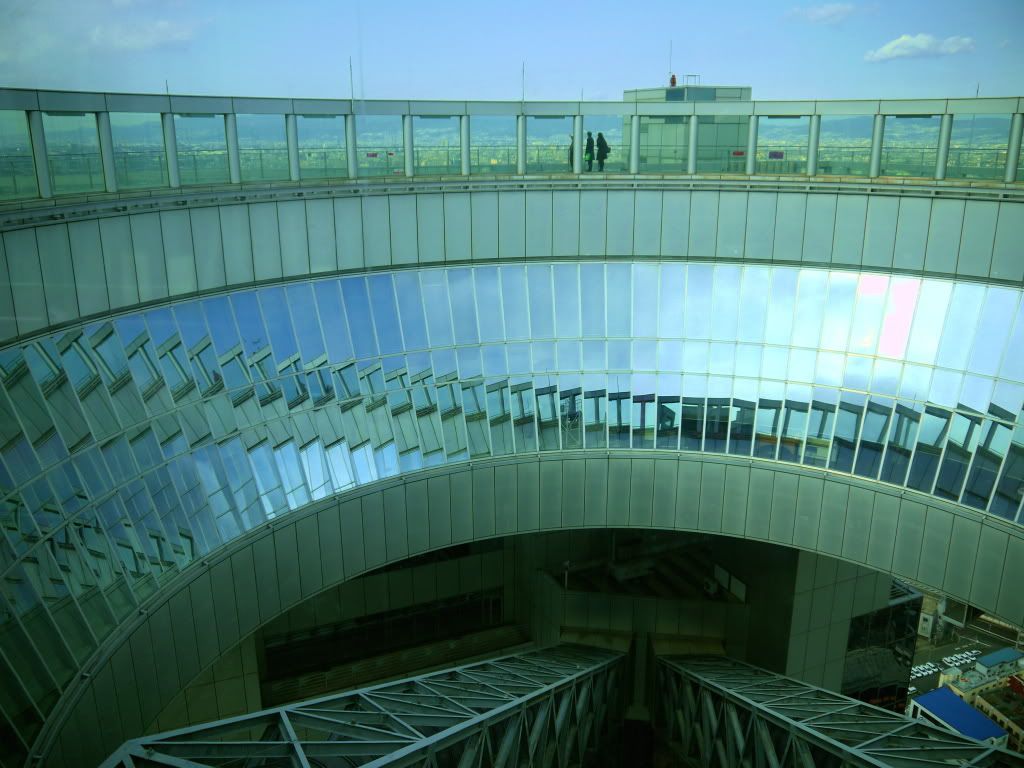 We head out from there to witness some unique architecture. The iconic building of Osaka, the Umeda Sky Building, is essentially a pair of office buildings that are connected at the top by a glass doughnut. Several escalator columns and hallways also span the abyss between the two towers. Everything inside is decked out with couple sofas and photo opportunities. In Asia, Christmas and Valentine's Day are virtually indistinguishable.
We head out from there to witness some unique architecture. The iconic building of Osaka, the Umeda Sky Building, is essentially a pair of office buildings that are connected at the top by a glass doughnut. Several escalator columns and hallways also span the abyss between the two towers. Everything inside is decked out with couple sofas and photo opportunities. In Asia, Christmas and Valentine's Day are virtually indistinguishable.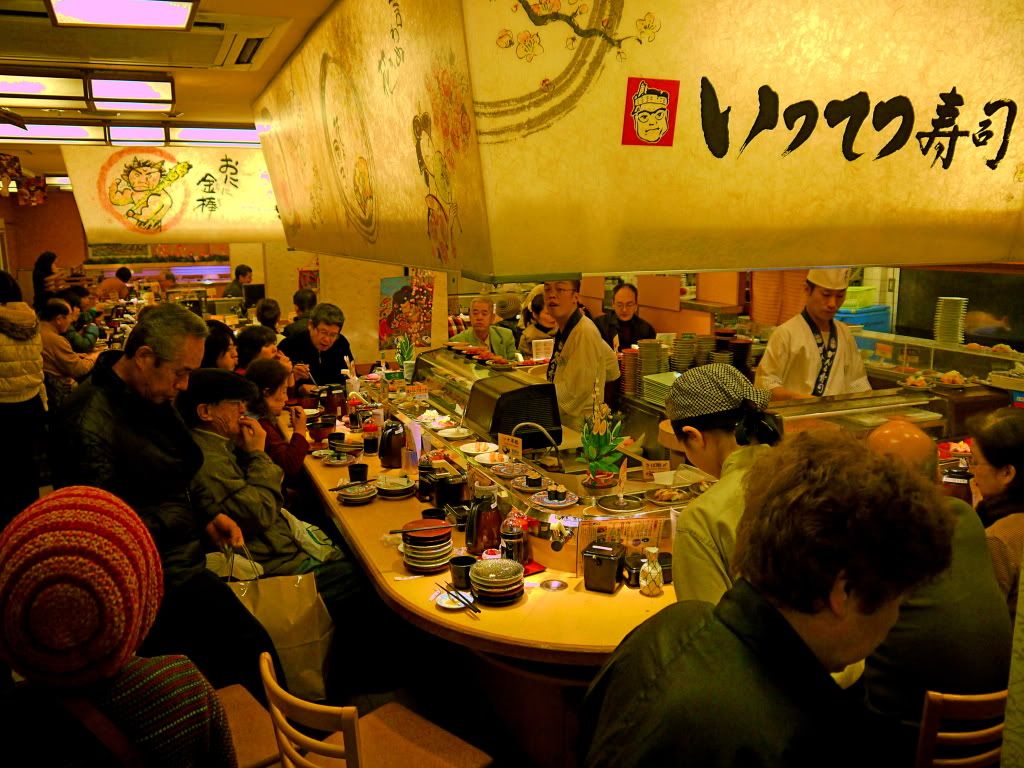 Our next goal is to see the palace of Osaka, but not before eating again. We stop in for one of my old favorites called kaitenzushi, or sushi by conveyor belt. This sushi bar is set up kind of like a capital 'B,' with the sushi chefs sitting inside of the letter, the customers positioned around the arcs, and the kitchen along the straight edge. Tracing the entire "letter" is a miniature conveyor belt crammed full of sushi plates. All you have to do is grab the plate that you want to eat, then wait until another delicious looking fish passes you. All the chefs have to do is see what's missing on the conveyor belt and just keep things stocked. No ordering, no waiting. A culinary first: fatty yellowtail.
Our next goal is to see the palace of Osaka, but not before eating again. We stop in for one of my old favorites called kaitenzushi, or sushi by conveyor belt. This sushi bar is set up kind of like a capital 'B,' with the sushi chefs sitting inside of the letter, the customers positioned around the arcs, and the kitchen along the straight edge. Tracing the entire "letter" is a miniature conveyor belt crammed full of sushi plates. All you have to do is grab the plate that you want to eat, then wait until another delicious looking fish passes you. All the chefs have to do is see what's missing on the conveyor belt and just keep things stocked. No ordering, no waiting. A culinary first: fatty yellowtail.Before we make it to the palace (maybe we got lost and walked several blocks out of our way...thank goodness Japan has maps on every street corner), we again stop for food. This time it's takoyaki. These warm dough balls have a small piece of octopus in every bite, and a lot of sauce to boot. Though it's available throughout Japan and even in parts of Korea, it is quite highly regarded in Osaka and for good reason.
The palace was finally within our grasp but the sudden rain deterred us. We chose rather to duck into the museum of Osaka history. There we learned that there are several different grind patterns that can be used when sharpening a katana blade, and that the majority of buildings in the city that are older than 100 years have either been burnt or shaken to the ground at least once.
By the time we've finished in the museum the rain has subsided. On its exterior, gilded dragons and tiger guard its walls. It's multiple roofs jut out impressively, adorned with brightly gilded fish. It is perched in a garden on top of a high stone wall which towers like a man-made mountain above a murky moat. Its gates are ominous and hewn from a wood that is near black either by nature or age. Though distinctly Japanese, it feels as impenetrable as any good castle should.
Our first impressions of the interior are much less grand, however. The entire castle has been gutted to make room for a sort of museum, but it is lackluster. Then we hit the jackpot: a collection of traditional samurai armor. The face plates were gruesome and foreboding. The helmets were frequently crowned with stag beetle tusks or golden antlers. My personal favorite was the black helm whose back had been affixed with long metal sunbeams that splayed out radially like some cross between a peacock's eminence and a scorpion's menace. Pictures were strictly forbidden.
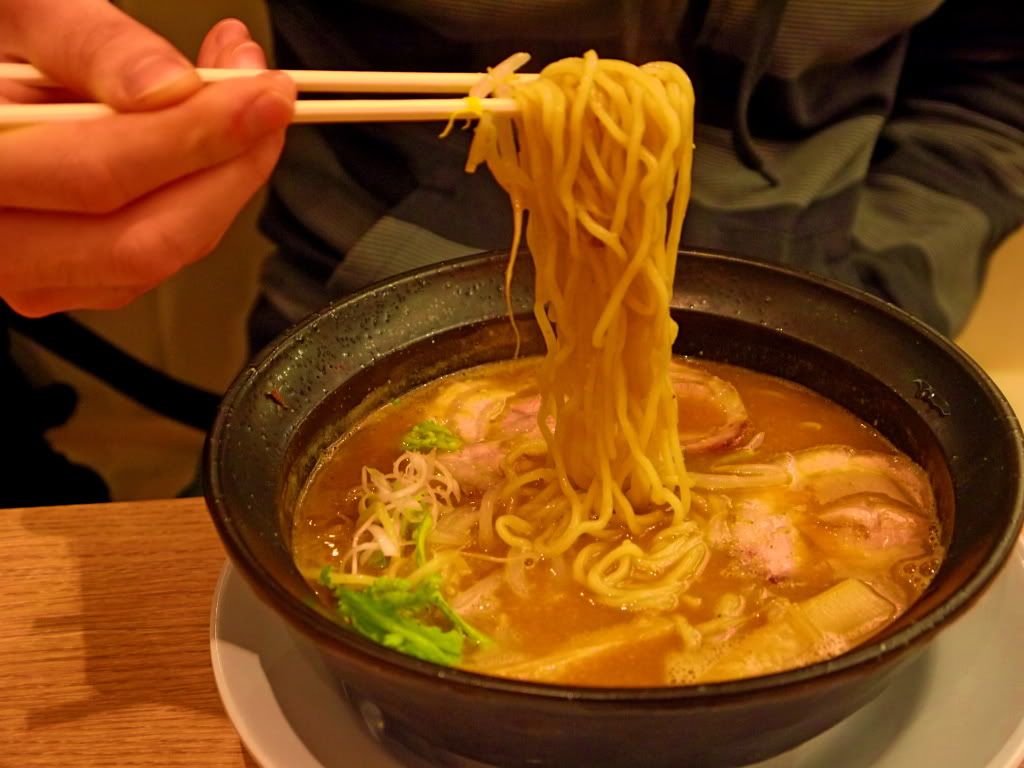 The day was capped with you guessed it, more food. My last Osakan meal consisted of another sampling of takoyaki, a plate of chicken karage, and miso ramen. Unlike other Japanese ramen I've had, this broth was incredibly thick. It was as if rather than thickening water they instead opted to thin peanut butter.
The day was capped with you guessed it, more food. My last Osakan meal consisted of another sampling of takoyaki, a plate of chicken karage, and miso ramen. Unlike other Japanese ramen I've had, this broth was incredibly thick. It was as if rather than thickening water they instead opted to thin peanut butter.I close Christmas weekend with a final pre-dawn trip to the airport. Incheon International Airport welcomes me with yet another frightening airplane moment. I hadn't noticed that we had exited the cloud line because everything beneath it, including the ground itself, was the exact same white out. While I was away Korea had properly entered winter. Touching ground was a startling turn of events, as until the turbines had begun to blown away the powder there had been no way to see that ground even existed. I wondered whether or not there was even enough friction between our tires and the pavement for us to reach a full stop in what had over a weekend transformed into Fargo International.
Now I'm on my way back home, where language is mine and comfort abounds. With any luck, I'll be able to snag a quick shower before I have to start teaching again. This trip has made Japan my single most frequently visited country, at three times. A big thanks to DW for making the four hour hike on the 4:30 train from Tokyo just to meet me for a day. It really made my Christmas wonderful, despite the exhaustion and unfamiliarity of travel and new cities.
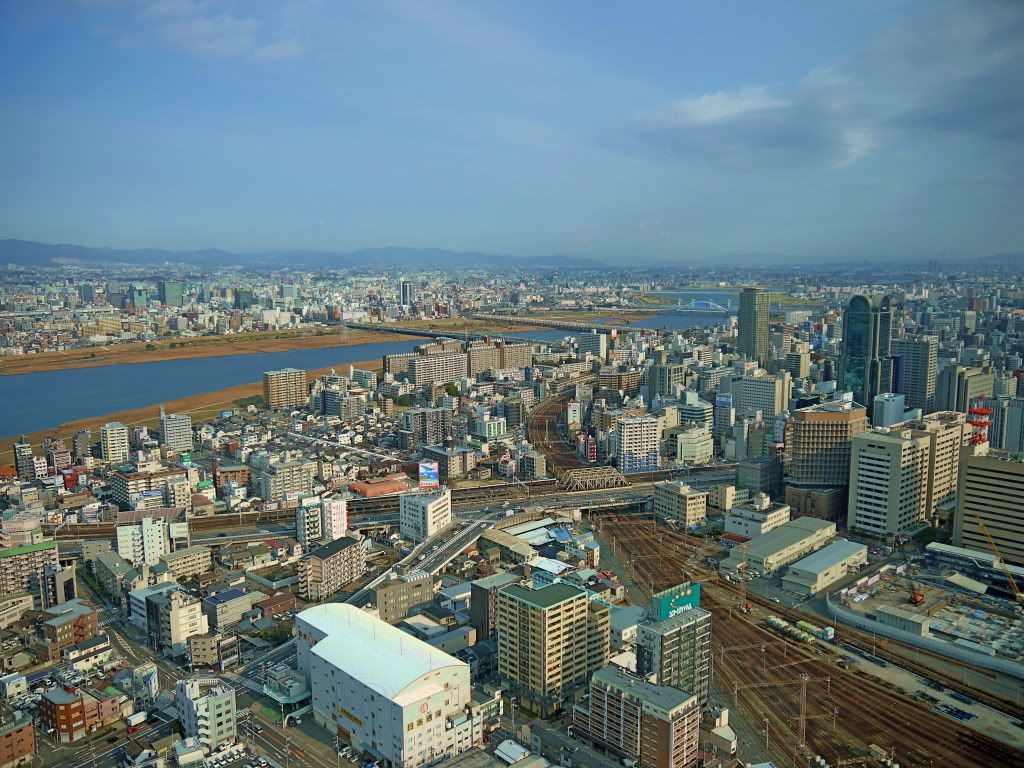
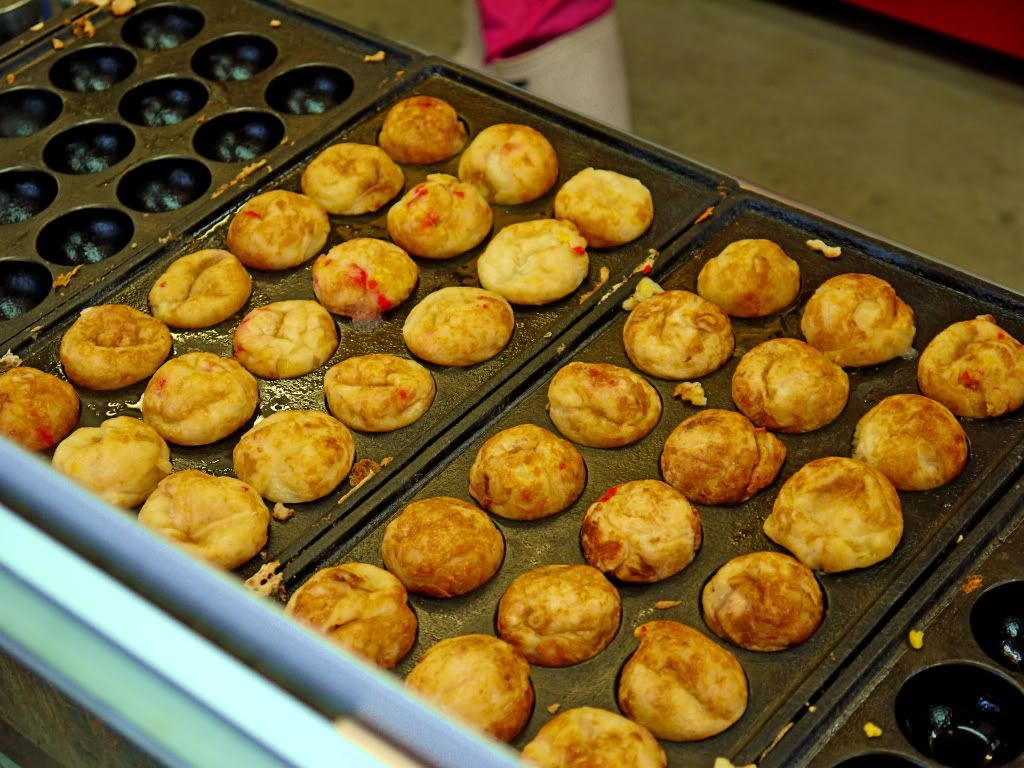
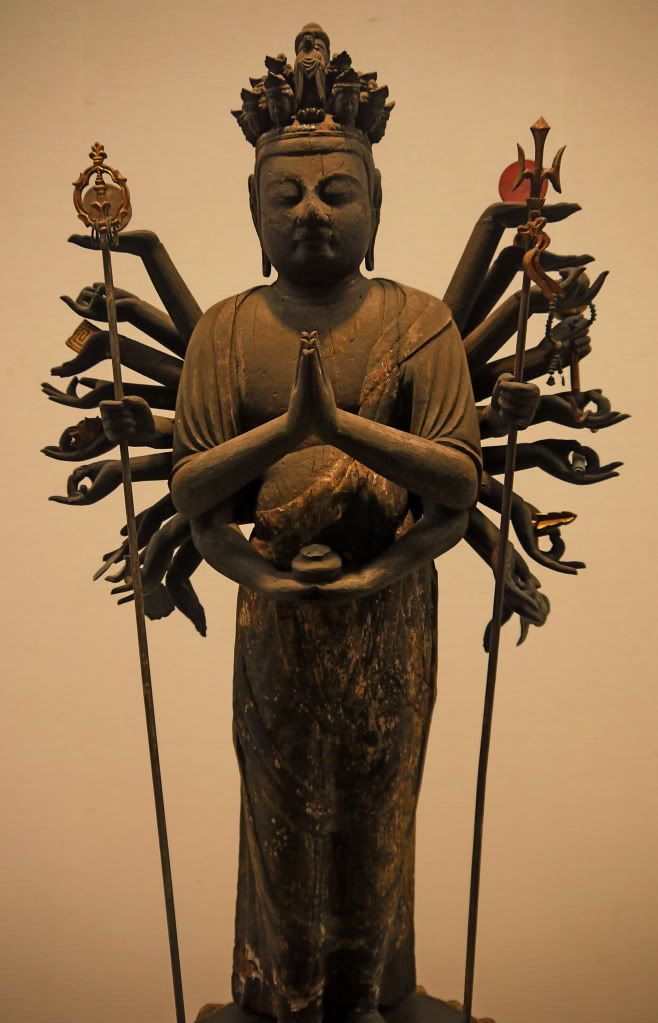
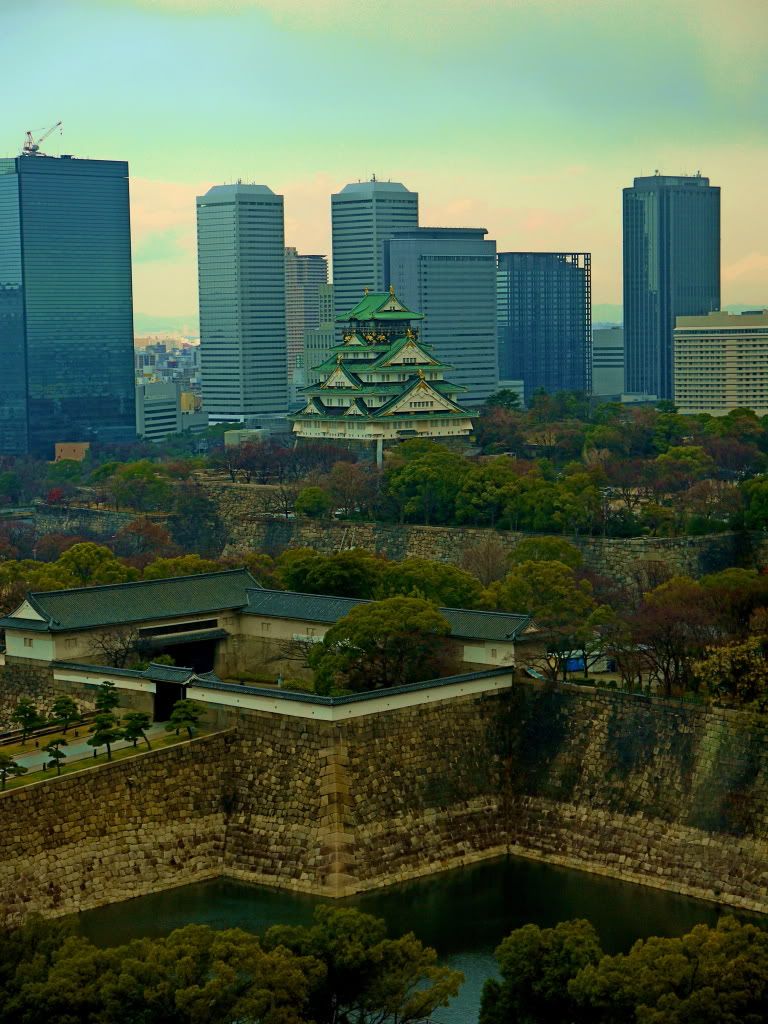

No comments:
Post a Comment